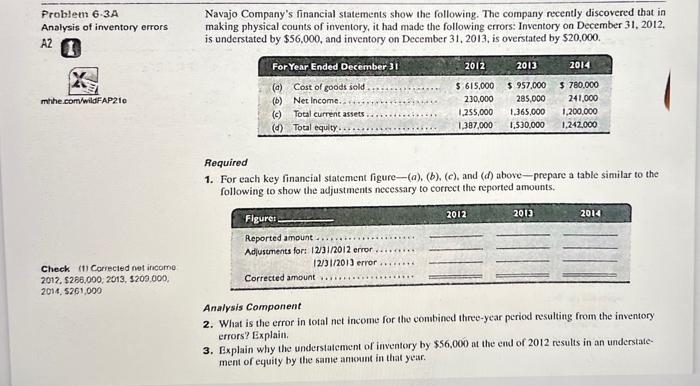Answered step by step
Verified Expert Solution
Question
1 Approved Answer
problem 6-3A Problem 6-3A Analysis of inventory errors AZ X mhhe.com/wildFAP210 Check (1) Corrected net income 2012, $286,000, 2013, $200,000, 2014, $261,000 Navajo Company's financial
problem 6-3A 



Step by Step Solution
There are 3 Steps involved in it
Step: 1

Get Instant Access to Expert-Tailored Solutions
See step-by-step solutions with expert insights and AI powered tools for academic success
Step: 2

Step: 3

Ace Your Homework with AI
Get the answers you need in no time with our AI-driven, step-by-step assistance
Get Started


